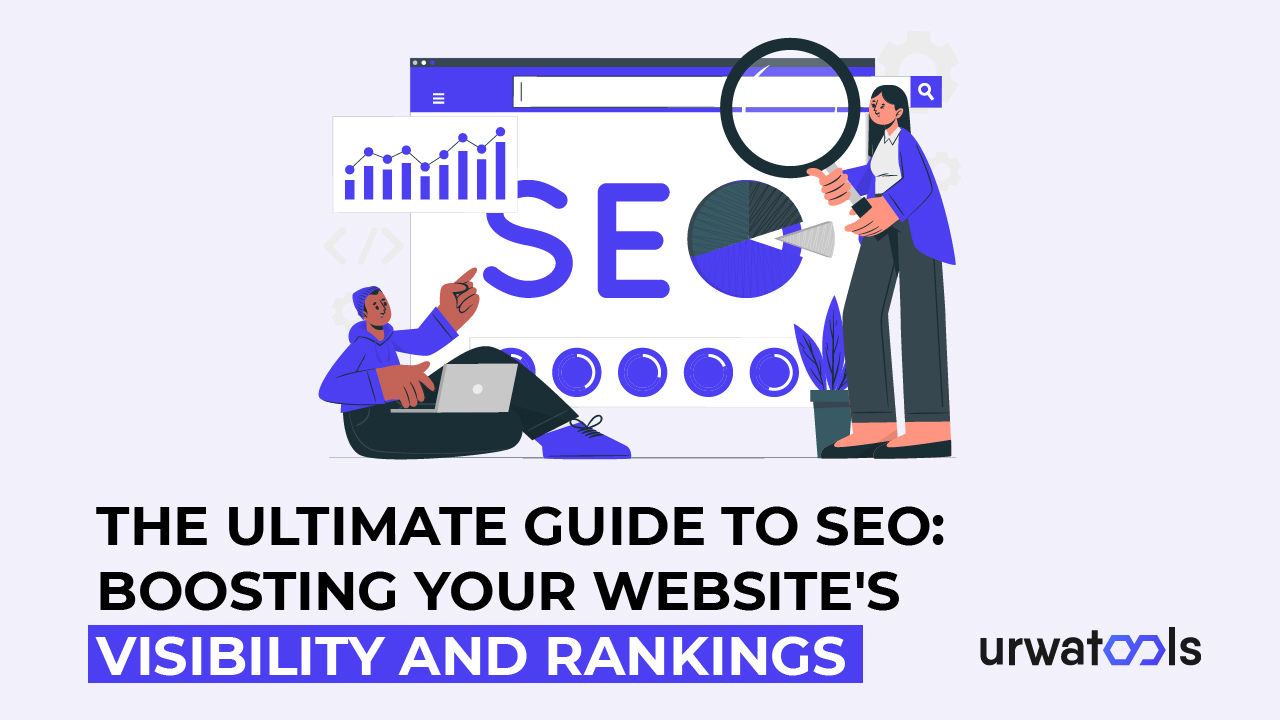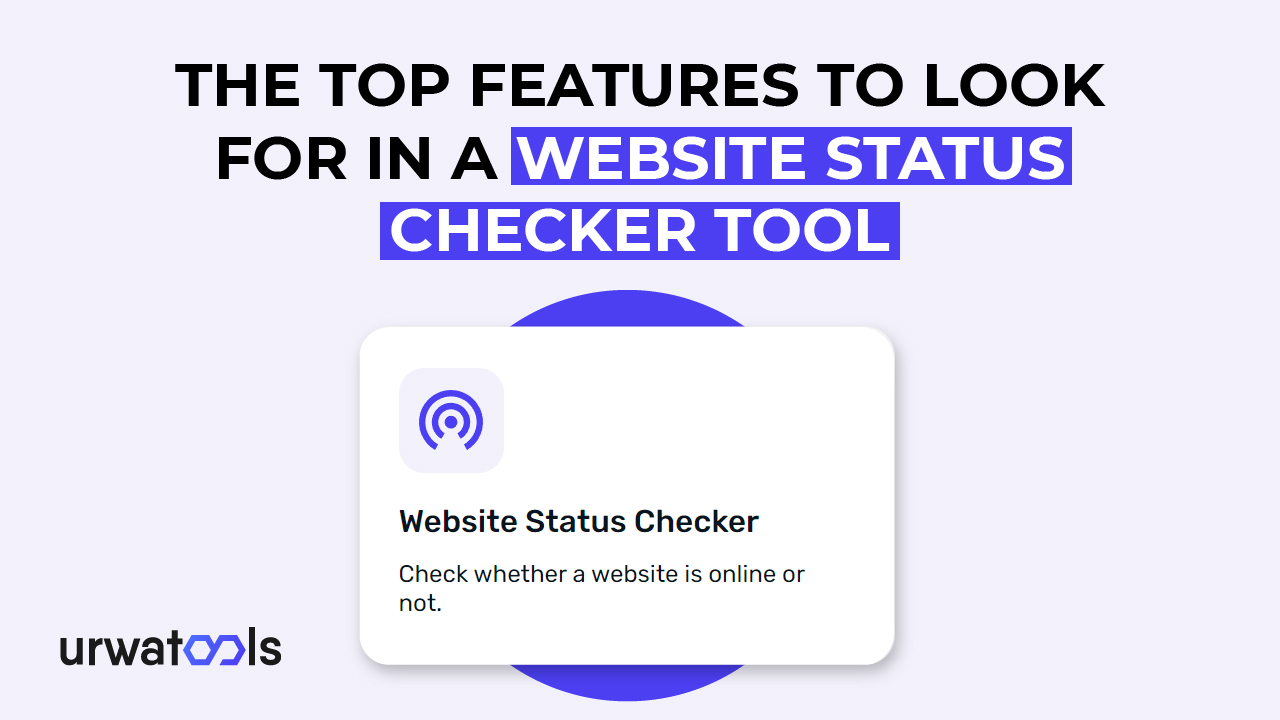검색 엔진 최적화(SEO)는 웹사이트의 잠재력을 최대한 발견하고 검색 엔진 결과 페이지에서 노출과 순위를 높이는 데 필수적입니다. 이 심층적 인 책은 SEO에 대해 배우고 유기적 트래픽을 극대화하기 위해 웹 사이트를 최적화하는 데 필요한 모든 것을 가르쳐 줄 것입니다. SEO를 처음 접하든 경험이 있든 이 책은 성공을 위한 필수적인 통찰력과 구체적인 제안을 제공할 것입니다.
1. SEO 소개
A. SEO의 정의 및 중요성:
SEO는 검색 엔진 결과 페이지(SERP)에서 노출과 순위를 높이기 위해 웹사이트를 최적화하는 것을 말합니다. 여기에는 웹사이트를 보다 검색 엔진과 사용자 친화적으로 만들기 위한 다양한 접근 방식과 전략이 포함되어 있습니다. 수백만 개의 웹사이트가 온라인에서 관심을 끌기 위해 싸우면서 SEO는 유기적 트래픽과 경쟁 우위를 추구하는 조직과 사람들에게 매우 중요해졌습니다.
B. 웹사이트 가시성 및 순위 최적화의 이점:
Google과 같은 검색 엔진에 맞게 웹사이트를 최적화하면 다음과 같은 몇 가지 이점을 누릴 수 있습니다.
1. 유기적 트래픽 증가: SERP 순위가 높을수록 웹사이트의 가시성과 유기적 트래픽이 향상됩니다.
2. 참여 및 전환 증가: SEO는 웹사이트 사용성, 탐색 및 사용자 경험을 개선합니다.
3. 브랜드 신뢰성 및 권위: 검색 엔진에서 높은 순위는 사용자의 신뢰와 신뢰성을 높여 경쟁사보다 귀하의 브랜드를 선택하는 경향이 더 커집니다.
4. 저비용 마케팅: 유료 광고와 비교하여 SEO는 장기적인 가치를 제공하고 지속적인 수수료를 발생시키지 않고 일관된 유기적 트래픽을 생성합니다.
5. 타겟팅 개선: 키워드 최적화를 사용하여 제품이나 서비스에 관심이 있는 특정 소비자를 타겟팅할 수 있습니다.
2. 검색 엔진 이해
A. 검색 엔진 작동 방식:
SEO를 이해하려면 검색 엔진이 어떻게 작동하는지 아는 것이 중요합니다. 검색 엔진에는 세 가지 주요 기능이 있습니다.
1. 크롤링: 검색 엔진은 크롤러 또는 스파이더로 알려진 자동화된 봇을 사용하여 온라인 사이트에 대한 정보를 찾고 수집합니다.
2. 인덱싱: 크롤러는 정보를 수집하고 큰 인덱스에 저장하여 검색 엔진이 관련 사이트를 더 빨리 찾을 수 있도록 합니다.
3. 순위: 사용자가 쿼리할 때 검색 엔진은 관련성 및 기타 매개변수를 기반으로 색인된 사이트를 평가하여 가장 관련성이 높은 결과를 제공합니다.
B. 검색 엔진 알고리즘의 핵심 요소:
검색 엔진 알고리즘은 웹 페이지의 순위를 매길 때 다양한 요소를 고려합니다. 정확한 알고리즘은 철저하게 비밀로 보호되지만 몇 가지 핵심 요소는 다음과 같습니다.
1. 관련성: 검색 엔진은 사용 약관, 콘텐츠 품질 및 사용자 의도를 기반으로 특정 검색어에 대한 페이지의 관련성을 평가합니다.
2. 권위: 다른 존경받는 사이트의 백링크, 소셜 미디어 언급 및 온라인 평판은 웹사이트의 권위와 신뢰성에 기여합니다.
3. 사용자 경험: 검색 엔진은 빠른 로딩 시간, 모바일 친화성 및 간단한 탐색과 같은 훌륭한 사용자 경험을 제공하는 웹사이트를 선호합니다.
4. 콘텐츠 품질: 고품질의 유익하고 재미있는 콘텐츠는 사용자에게 도움이 되기 때문에 순위가 높을 가능성이 더 높습니다.
3. 키워드 연구 및 최적화
A. 키워드 연구의 중요성:
키워드 연구는 SEO의 기반입니다. 여기에는 소비자가 검색 엔진에서 웹사이트 콘텐츠에 대한 정보를 찾는 데 사용하는 검색 키워드와 구문을 결정하는 것이 포함됩니다. 타겟 고객이 선택하는 용어를 이해하면 웹사이트, 그래픽 및 콘텐츠를 최적화하여 검색 의도에 맞게 수행할 수 있습니다.
B. 키워드 조사 도구:
키워드 연구는 다음과 같은 다양한 도구의 도움을 받을 수 있습니다.
1. Google 용어 계획자: 이 무료 Google 도구에는 용어 제안, 검색량 및 경쟁 정보가 포함되어 있습니다.
2. SEMrush: 키워드 연구, 경쟁 분석 등을 포함하는 올인원 SEO 도구입니다.
3. Ahrefs: 키워드 연구, 백링크 분석 및 콘텐츠 최적화 기능을 갖춘 또 다른 정교한 SEO 도구입니다.
C. 키워드 최적화 기법:
키워드에 맞게 웹 사이트를 최적화하려면 다음 기술을 고려하십시오.
1. 키워드를 콘텐츠에 유기적으로 통합: 페이지 제목, 헤더, 메타 태그 및 콘텐츠 전체에 키워드를 포함합니다.
2. 롱테일 키워드: 경쟁이 적고 전환 가능성이 더 높은 더 길고 정확한 키워드 구문에 집중합니다.
3. 키워드 스터핑 방지: 과도한 키워드 사용은 검색 엔진 페널티를 초래할 수 있습니다. 대신 유용한 재료를 생산하는 데 집중하십시오.
4. 유지 및 조정: 키워드 실적을 정기적으로 검토하고 필요에 따라 수정하여 순위를 높입니다.
4. 온페이지 SEO
A. 웹사이트 구조 및 탐색 최적화:
간단한 탐색 기능이 있는 잘 구성된 웹사이트는 사람들이 콘텐츠를 더 쉽게 찾을 수 있도록 합니다. 검색 엔진 크롤러가 사이트의 계층 구조를 파악하는 데 도움이 됩니다. 다음을 확인하십시오.
1. 페이지 순서: 페이지와 카테고리의 논리적 계층 구조를 사용하여 명확한 사이트 구조를 만듭니다.
2. 키워드 리치 URL: 각 페이지의 콘텐츠를 정확하게 반영하는 의미 있고 키워드가 풍부한 URL을 만듭니다.
3. 내부 링크: 관련 페이지를 연결하여 웹사이트의 다른 부분 간에 명확한 링크를 제공합니다.
B. 메타 태그 및 설명:
메타 태그는 검색 엔진에 웹 페이지에 대해 알려줍니다. 가장 중요한 두 가지 메타 태그는 다음과 같습니다.
1. 제목 태그의 키워드: 제목 태그에 관련 키워드를 포함하고 검색 엔진 결과에서 클릭을 촉진하는 데 매력적으로 만드십시오.
2. 메타 설명: 클릭을 유도하는 페이지 콘텐츠에 대한 간략하고 설득력 있는 요약을 작성합니다.
C. URL 최적화:
URL을 최적화하면 검색 엔진과 방문자가 사이트의 콘텐츠를 이해하는 데 도움이 됩니다. 다음 모범 사례를 사용하십시오.
1. 설명이 포함된 URL 사용: URL을 읽을 수 있도록 하고 관련 키워드를 포함합니다.
2. 단어에 하이픈 넣기: 가독성을 높이려면 하이픈을 사용하여 URL에서 단어를 구분합니다.
D. 헤더 태그 및 콘텐츠 최적화:
헤더 태그(H1, H2, H3 등)는 콘텐츠를 정렬하고 검색 엔진에 컨텍스트를 제공하는 데 도움이 됩니다. 다음을 통해 콘텐츠를 개선하세요.
1. 각 페이지에 대해 다른 H1 태그 사용: H1 요소에는 기본 키워드가 포함되어야 하며 페이지의 내용을 요약해야 합니다.
2. H2 및 H3 태그를 사용하여 관련 키워드 통합: 이 부제목을 사용하여 텍스트를 정렬하고 추가 키워드 신호를 제공합니다.
3. 고품질 콘텐츠 만들기: 사용자 목적을 충족하기 위해 유익하고 재미있고 잘 구조화된 콘텐츠를 만듭니다.
5. 오프 페이지 SEO
A. 고품질 백링크 구축:
오프 페이지 SEO는 백링크 또는 다른 웹사이트에서 들어오는 링크에 크게 의존합니다. 신뢰할 수 있는 출처의 고품질 백링크는 웹사이트의 권위와 중요성을 보여줍니다. 다음과 같은 전략을 고려하세요.
1. 게스트 블로깅: 해당 지역의 다른 웹사이트에 대한 고품질 콘텐츠를 작성하여 자신의 웹사이트로 연결합니다.
2. 인플루언서 아웃리치: 귀하의 작업을 언급하거나 연결할 수 있는 업계 리더 및 인플루언서와 관계를 발전시키십시오.
3. 자료 프로모션: 소셜 미디어 및 기타 관련 장소에서 자료를 홍보하여 자동으로 백링크를 획득합니다.
B. 소셜 미디어 신호 및 SEO 영향:
소셜 미디어 신호는 SEO 노력에 간접적으로 영향을 미칩니다. 소셜 미디어 공유 및 좋아요는 검색 엔진 결과에 직접적인 영향을 미치지 않지만 다음을 수행할 수 있습니다.
1. 콘텐츠 노출 늘리기: 소셜 미디어에서 공유되는 매력적인 자료는 더 많은 청중에게 다가갈 수 있어 더 많은 백링크와 방문자를 확보할 수 있습니다.
2. 트래픽 증가: 매력적인 소셜 미디어 게시물은 사람들을 웹사이트로 유도하여 총 트래픽과 전환을 증가시킬 수 있습니다.
3. 브랜드 인지도: 강력한 소셜 미디어 존재는 브랜드 노출을 향상시켜 더 많은 브랜드 검색과 유기적 방문자로 이어질 수 있습니다.
C. 게스트 블로그 및 인플루언서 봉사 활동:
게스트 블로깅 및 인플루언서 홍보는 유용한 오프 페이지 SEO 방법입니다.
1. 도달 범위 확장: 게스트 블로그는 다른 웹사이트에 대한 관련 자료를 생성하고 업계 리더와의 관계를 발전시켜 새로운 청중에게 다가가고 잠재 소비자에게 노출되는 데 도움이 됩니다.
2. 백링크 프로필 늘리기: 게스트 기사의 작성자 약력 섹션에는 백링크 프로필에 도움이 될 수 있는 웹사이트 링크가 포함되는 경우가 많습니다.
3. 신뢰성 향상: 신뢰할 수 있는 웹사이트 및 업계 리더와 협력하면 신뢰와 권위를 얻는 데 도움이 됩니다.
6. 테크니컬 SEO
A. 사이트 속도 최적화:
웹사이트 성능은 SEO 및 사용자 경험에 매우 중요합니다. 로딩 속도가 느린 웹사이트는 순위와 사용자 경험에 해를 끼칠 수 있습니다. 사이트 속도 향상:
1. 이미지 최적화: 품질 저하 없이 사진을 압축하고 허용 가능한 파일 형식으로 변환합니다.
2. CSS 및 JavaScript 축소: 관련 없는 문자와 코드를 제거하여 파일 크기를 최소화합니다.
3. 캐싱: 브라우저 캐싱을 사용하여 자주 방문하는 리소스를 절약하고 반복 사용자의 로드 시간을 줄입니다.
B. 모바일 친화성 및 반응형 디자인:
모바일 장치의 인기가 높아짐에 따라 모바일 친화적인 웹사이트를 보유하는 것이 중요합니다. 다음을 수행하여 사이트를 모바일에 최적화하세요.
1. 반응형 디자인: 웹사이트가 다양한 화면 크기와 해상도에 응답하는지 확인합니다.
2. 모바일 친화적인 탐색: 메뉴와 링크에 쉽게 액세스할 수 있는지 확인합니다.
3. 모바일 페이지 속도: 모바일 장치에서 웹사이트를 빠르게 로드합니다.
C. XML 사이트맵 및 robots.txt:
XML 사이트맵은 검색 엔진이 웹사이트를 보다 효율적으로 크롤링하는 데 도움이 됩니다. robots.txt 파일은 검색 엔진 스파이더에게 높은 순위를 부여할 페이지와 무시할 페이지를 지시합니다. 확인:
1. XML 사이트맵 제출: Google Search Console을 사용하여 XML 사이트맵을 검색 엔진에 제출합니다.
2. robots.txt 최적화: robots.txt 파일을 검사하여 파일이 올바르게 구성되고 검색 엔진이 필수 사이트에 도달할 수 있는지 확인합니다.
7. 로컬 SEO
A. 비즈니스를 위한 로컬 SEO의 중요성:
지역 SEO는 웹사이트를 최적화하여 고객을 유치하고 지역 검색 결과에서의 노출을 향상시킵니다. 이는 물리적 위치에 있는 회사에 특히 중요합니다. 고려하다:
1. Google 마이 비즈니스(GMB) 최적화: 최신 회사 정보, 사진 및 리뷰로 Google 마이 비즈니스 프로필을 요청하고 최적화합니다.
2. 지역 키워드 타겟팅: 콘텐츠 및 메타 태그에 위치별 키워드를 포함합니다.
3. 지역 인용: 회사의 이름, 주소 및 전화 번호(NAP)가 디렉토리, 리뷰 사이트 및 기타 온라인 플랫폼 전체에서 일관되도록 합니다.
B. Google 마이 비즈니스 최적화:
로컬 SEO에서 성공하려면 Google 마이 비즈니스 프로필을 최적화해야 합니다. 다음 최적화 제안 사항을 따르십시오.
1. 비즈니스 소유권 주장 및 확인: 소유권을 입증하려면 GMB 목록에 대한 소유권을 주장하고 인증합니다.
2. 프로필 완성: 연락처 정보, 영업 시간 및 분류와 같은 회사에 대한 정확하고 완전한 정보를 제공합니다.
3. 고객 리뷰 장려: 긍정적인 GMB 프로필 리뷰는 노출과 신뢰도를 높일 수 있습니다.
C. 지역 표창장 건물:
로컬 인용은 회사의 NAP(이름, 주소 및 전화 번호)가 다른 웹 사이트, 디렉토리 및 플랫폼에서 언급되는 인스턴스입니다. 다음을 통해 지역 인용을 만듭니다.
1. 온라인 디렉토리 제출: 회사 정보를 Yelp, Yellow Pages 및 산업별 디렉토리와 같은 로컬 디렉토리에 제출합니다.
2. 일관성 유지의 중요성: 오해를 최소화하고 지역 검색 순위를 높이려면 모든 인용에서 NAP가 일관되어야 합니다.
8. 콘텐츠 제작 및 최적화
A. 고품질의 매력적인 콘텐츠 제작:
고품질 콘텐츠를 만드는 것은 사용자 참여와 SEO에 매우 중요합니다. 다음 제언을 고려해 보십시오.
1. 타겟 고객 인식: 타겟 고객과 연결되는 콘텐츠를 제작하려면 그들의 취미, 고충 분야 및 선호도를 조사하십시오.
2. 독특한 가치 제공: 귀하의 자료를 경쟁업체와 차별화하는 관련 정보, 통찰력 또는 오락을 제공합니다.
3. 멀티미디어 요소 사용: 자료의 시각적 매력과 참여도를 높이려면 사진, 비디오, 인포그래픽 및 기타 멀티미디어를 사용하십시오.
B. 관련 키워드로 콘텐츠 최적화:
자료의 가독성과 자연스러운 흐름을 개선하는 동시에 검색 엔진에 맞게 최적화하십시오. 관련 키워드 포함:
1. 페이지 제목, 헤더 및 콘텐츠에 기본 키워드를 포함합니다.
2. 롱테일 키워드: 사용자 의도와 관련이 있고 경쟁이 낮은 롱테일 키워드를 찾습니다.
3. 컨텍스트 최적화: 주제를 철저히 다루는 광범위하고 심층적인 정보를 생성합니다.
C. 멀티미디어 구성 요소 포함:
멀티미디어 기능은 사용자 경험과 SEO를 향상시킵니다. 다음을 확인하십시오.
1. 사진: 접근성과 미적 매력을 높이려면 정보를 제공하는 대체 태그가 있는 고품질 사진을 사용하십시오.
2. 동영상: 사람들의 참여를 유도하고 웹사이트에서 보내는 시간을 개선하기 위해 관련 동영상을 삽입하거나 동영상 콘텐츠를 제작합니다.
3. 인포그래픽: 이해하기 쉬운 스타일로 어려운 정보를 전달하기 위해 미학적으로 매력적인 인포그래픽을 만듭니다.
9. 사용자 경험 및 SEO
A. SEO를 위한 사용자 경험의 중요성:
사용자 경험(UX)은 SEO에서 매우 중요합니다. 검색 엔진은 사용자에게 가장 관련성이 높은 결과를 제공하며 좋은 사용자 경험은 관련성과 품질을 의미합니다. UX 개선:
1. 모바일 친화성: 웹사이트를 모바일 장치에 맞게 최적화하고 다양한 화면 크기에서 원활한 탐색을 제공합니다.
2. 사용자 친화적인 탐색: 웹사이트 구조를 구성하고 명확한 메뉴와 내부 연결을 구현하여 사람들이 정보에 쉽게 액세스할 수 있도록 합니다.
3. 가독성 및 스캔 가능성: 명확한 제목, 부제목 및 글머리 기호를 사용하여 정보를 쉽게 읽고 스캔할 수 있도록 합니다.
B. 반응형 디자인 및 모바일 최적화:
반응형 디자인은 웹사이트가 다양한 장치와 화면 크기에서 표시될 수 있도록 보장합니다.
1. 반응형 디자인 접근 방식을 구현하여 웹사이트가 모든 장치에서 제대로 표시되고 작동하도록 보장합니다.
2. 모바일 친화적 기능: 모바일 UX를 개선하려면 클릭 투 콜 버튼, 간단한 양식, 빠르게 로드되는 웹사이트와 같은 요소를 고려하십시오.
3. 모바일 테스트: 다양한 모바일 장치에서 웹사이트를 정기적으로 테스트하여 발생할 수 있는 문제를 발견하고 해결합니다.
10. SEO 성공 측정 및 추적
A. SEO를 위한 핵심성과지표(KPI):
KPI를 추적하면 SEO 효율성을 평가할 수 있습니다. 다음과 같은 중요한 메트릭을 고려하세요.
1. 유기적 트래픽: 검색 엔진 결과를 통해 도착하는 방문자 수를 추적합니다.
2. 키워드 추적: 타겟 키워드에 대한 키워드 순위를 추적하여 가시성과 성능을 측정합니다.
3. 전환율: 구매 또는 양식 작성과 같은 원하는 작업을 수행하는 웹사이트 방문자의 비율을 계산합니다.
B. Google 애널리틱스 및 검색 콘솔:
Google Analytics 및 Google Search Console은 SEO 결과를 모니터링하고 추적하는 데 매우 효과적인 도구입니다. 이를 활용하여 다음을 수행할 수 있습니다.
1. 웹사이트 분석: 유기적 트래픽, 사용자 활동 및 전환율을 분석하여 웹사이트 트래픽을 모니터링합니다.
2. 키워드 성능 모니터링: 어떤 키워드가 트래픽과 전환을 증가시키는지 확인합니다.
3. 기술적 어려움 파악: Search Console을 사용하여 크롤링 오류, 색인 생성 문제, 모바일 사용성 문제를 파악합니다.
11. 결론
마지막으로, 효율적인 SEO 방법을 사용하는 것은 웹사이트의 노출과 순위를 높이는 데 중요합니다. 검색 엔진 알고리즘의 기본 부분을 알고, 광범위한 키워드 연구를 수행하고, 페이지 및 페이지 외부 특성을 최적화하고, 탁월한 사용자 경험을 제공함으로써 웹사이트의 유기적 노출을 늘리고 더 많은 타겟 방문자를 유치하십시오. Google Analytics 및 Google Search Console과 같은 도구를 사용하여 진행 상황을 추적하고 적절한 KPI를 사용하여 SEO 성과를 정량화하는 것을 잊지 마십시오. 이러한 방법을 즉시 채택하기 시작하고 귀하의 웹사이트가 검색 엔진 순위에서 상승하는 것을 확인하십시오!







